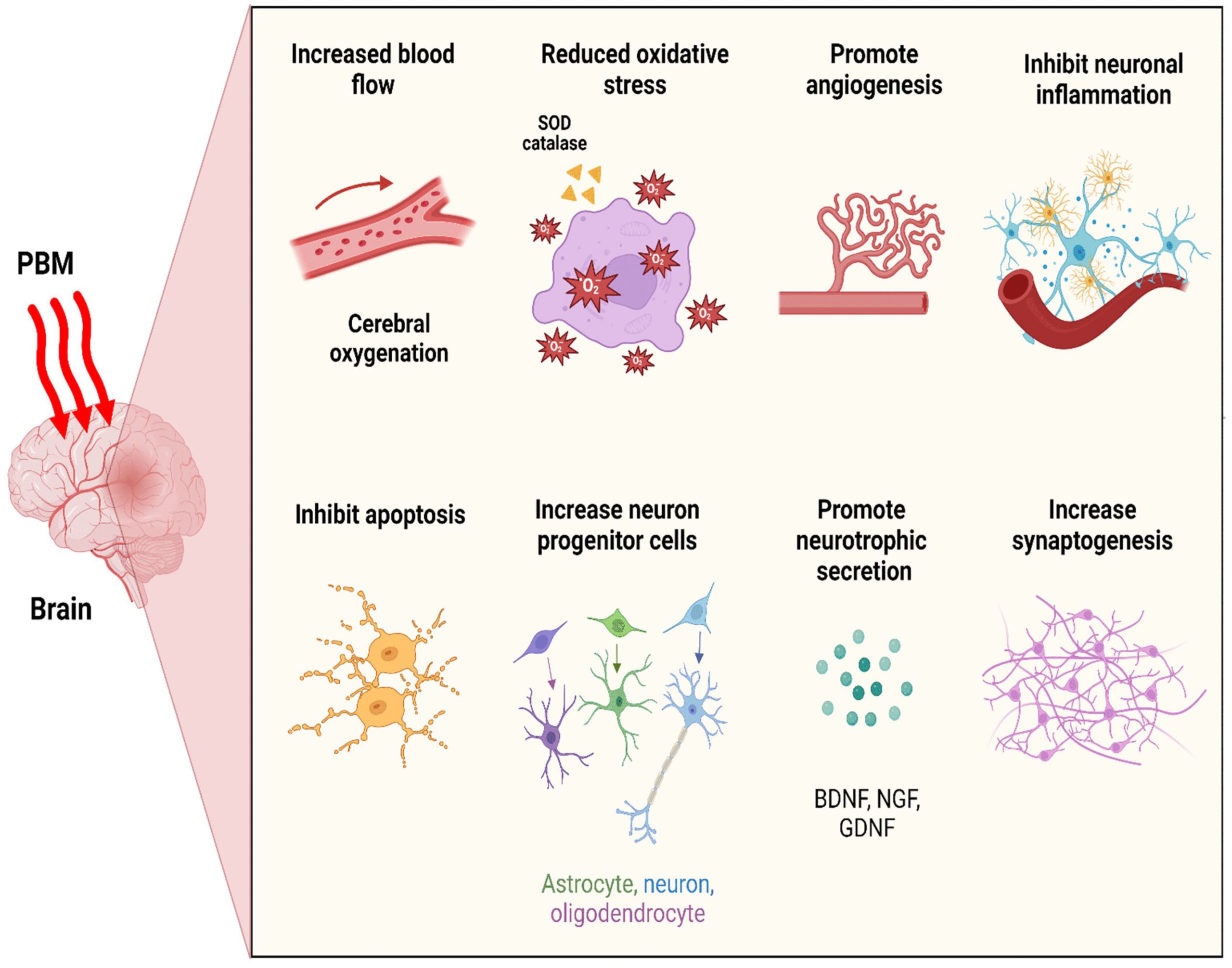Photobiomodulation – What is it and why is it useful during treatments?
In functional neurology, photobiomodulation, or PBM, is used for its ability to enhance neuroplastic changes in the brain as well as induce positive changes in cognition, mood, sleep, and overall performance. The initial science behind photobiomodulation can date back to Hippocrates where he noticed that exposure to sunlight could help relieve certain conditions, however, modern research into the cellular effects have not been discovered until much more recently.
PBM is the use of non-invasive visible and near-infrared light at minimal power densities that activate cells through specific wavelengths. A main component in this therapy is cytochrome c oxidase (CCO), which is a key component in the respiratory transport chain of mitochondria, that exhibits absorbance of around 600 to 900 nm. The main reason why photobiomodulation can be found in a functional neurology office is to enhance neuroplastic changes within the brain. One randomized controlled double blind trial showed that transcranial photobiomodulation improved cognition and increased serum levels of brain-derived neurotrophic factor (BDNF), in patients presenting with mild cognitive impairments.
PBM is effective at stimulating cellular healing due to the impact it has on the mitochondria which is also known as the “energy powerhouse” of a cell. The mitochondria produce energy through a molecule called adenosine triphosphate (ATP). ATP is the molecule that provides energy to all our cells. The energy from ATP enables us to carry out all physiological activities and provides energy to the brain cells. Therefore the application of light energy can enhance blood flow to the brain and cellular energy. This facilitates delivery of nutrients and removal of waste products allowing for neuron healing and decreased inflammation. The effects of PBM can be shown to optimize cerebral metabolic activity, enhance blood flow, and increase angiogenesis. Angiogenesis is the biological process where new blood vessels form from existing ones when tissue healing is triggered.
PBM also increases antioxidant activity, decreases the inflammatory response, promotes neurotrophins secretion, fosters the activation of neuroprogenitor cells, and facilitates synaptogenesis, thereby enabling the formation of new neuronal connections. PBM shows promise for treating conditions like dementia, stroke, brain trauma, Parkinson’s disease, and depression, even enhancing cognitive functions in healthy individuals.

The effects of photobiomodulation continue to be researched but we know it shows promising results when it comes to complementing the care you receive under a functional neurologist. Throughout your visit our goal is to enhance neuroplastic changes within the brain. This means that we are forming new neuronal connections within the brain specifically targeted to your symptoms. So the next time you’re in the office or explaining treatment to your friends and family you can point out your knowledge and understanding of photobiomodulation and neuroplasticity!